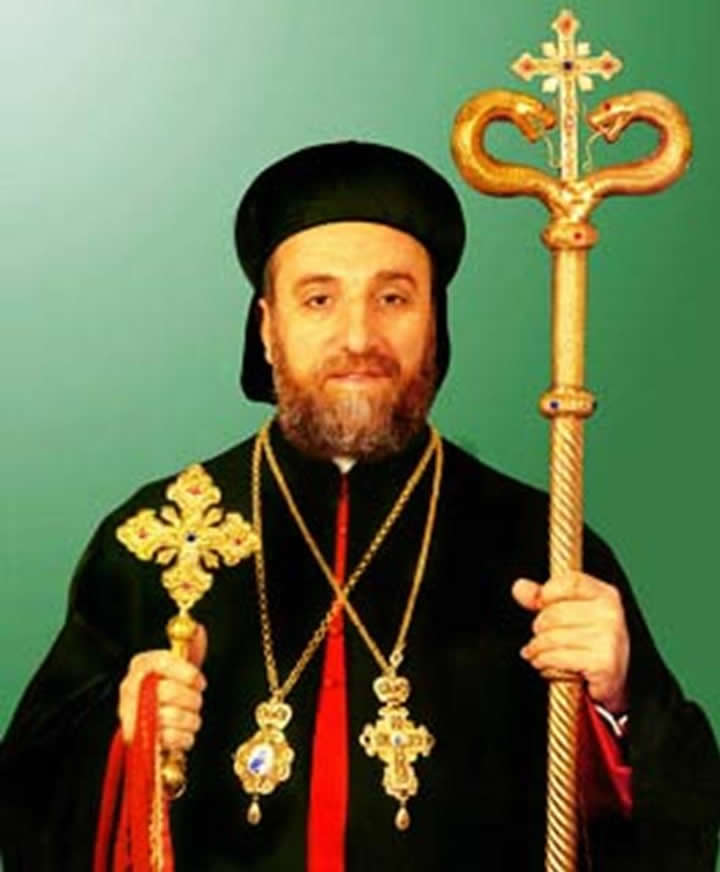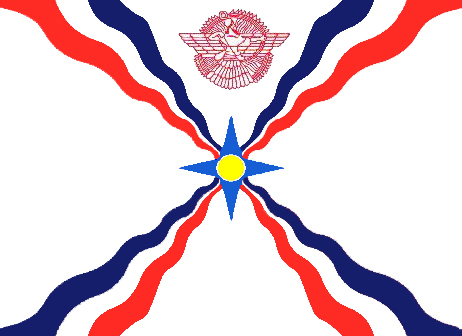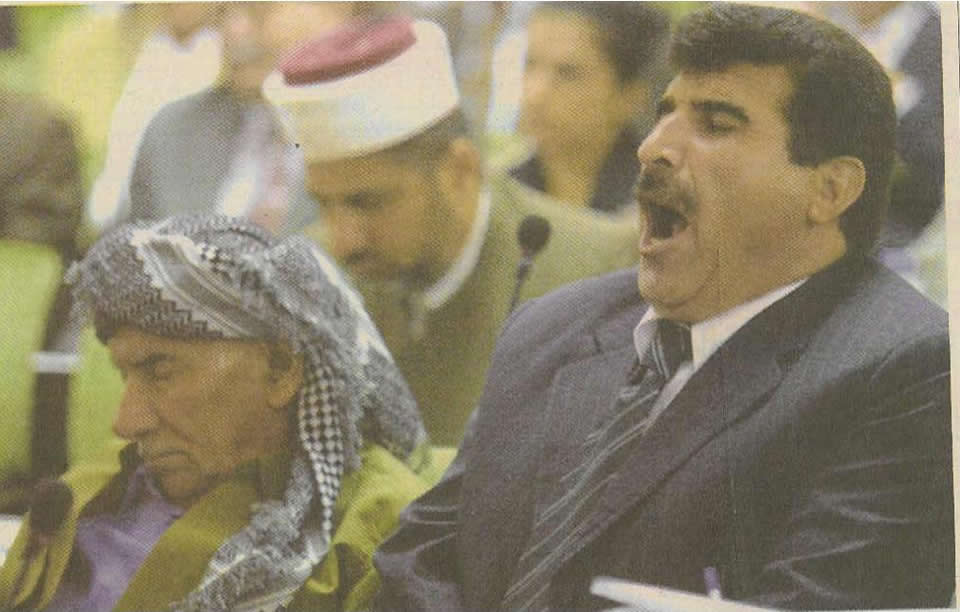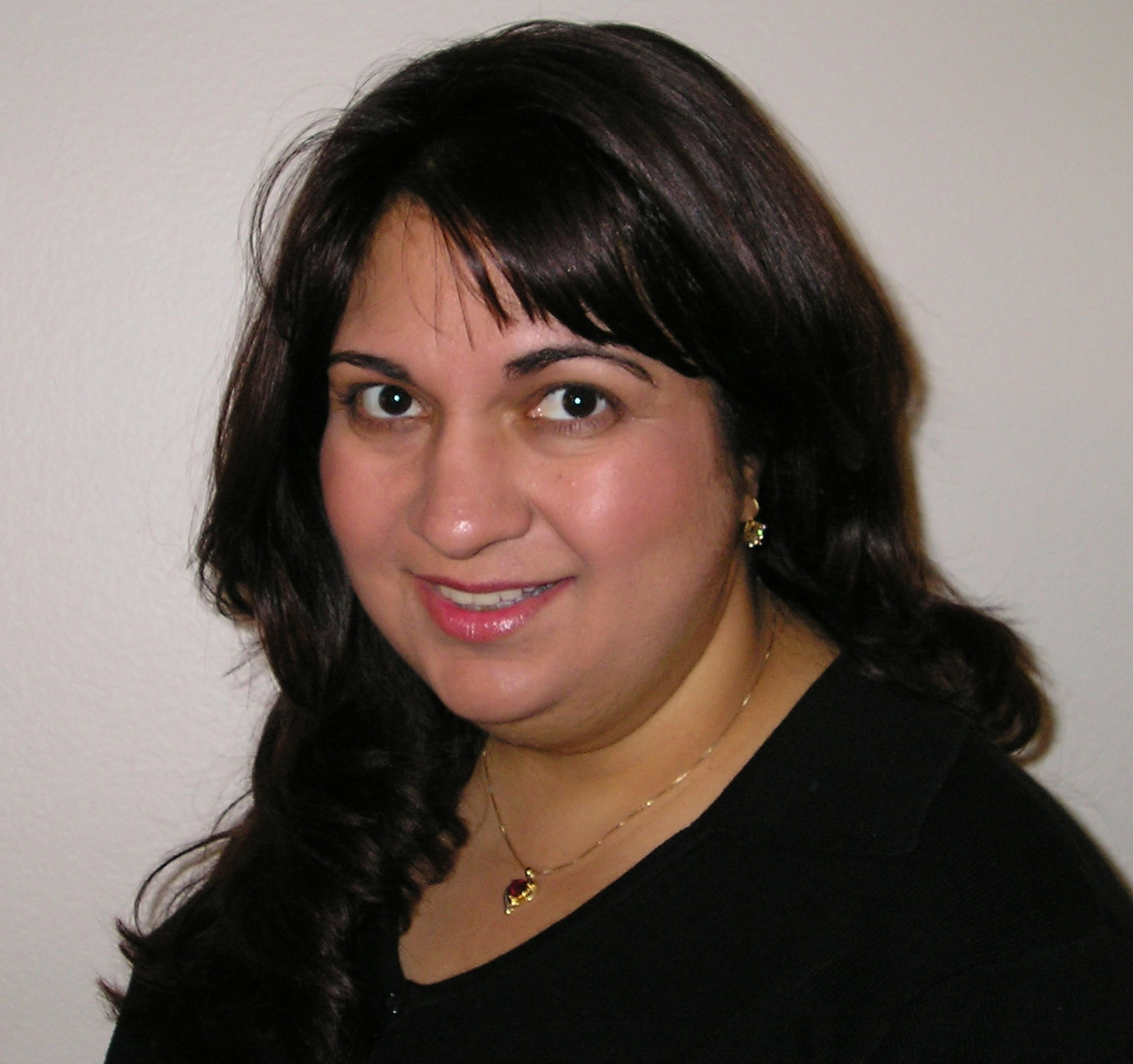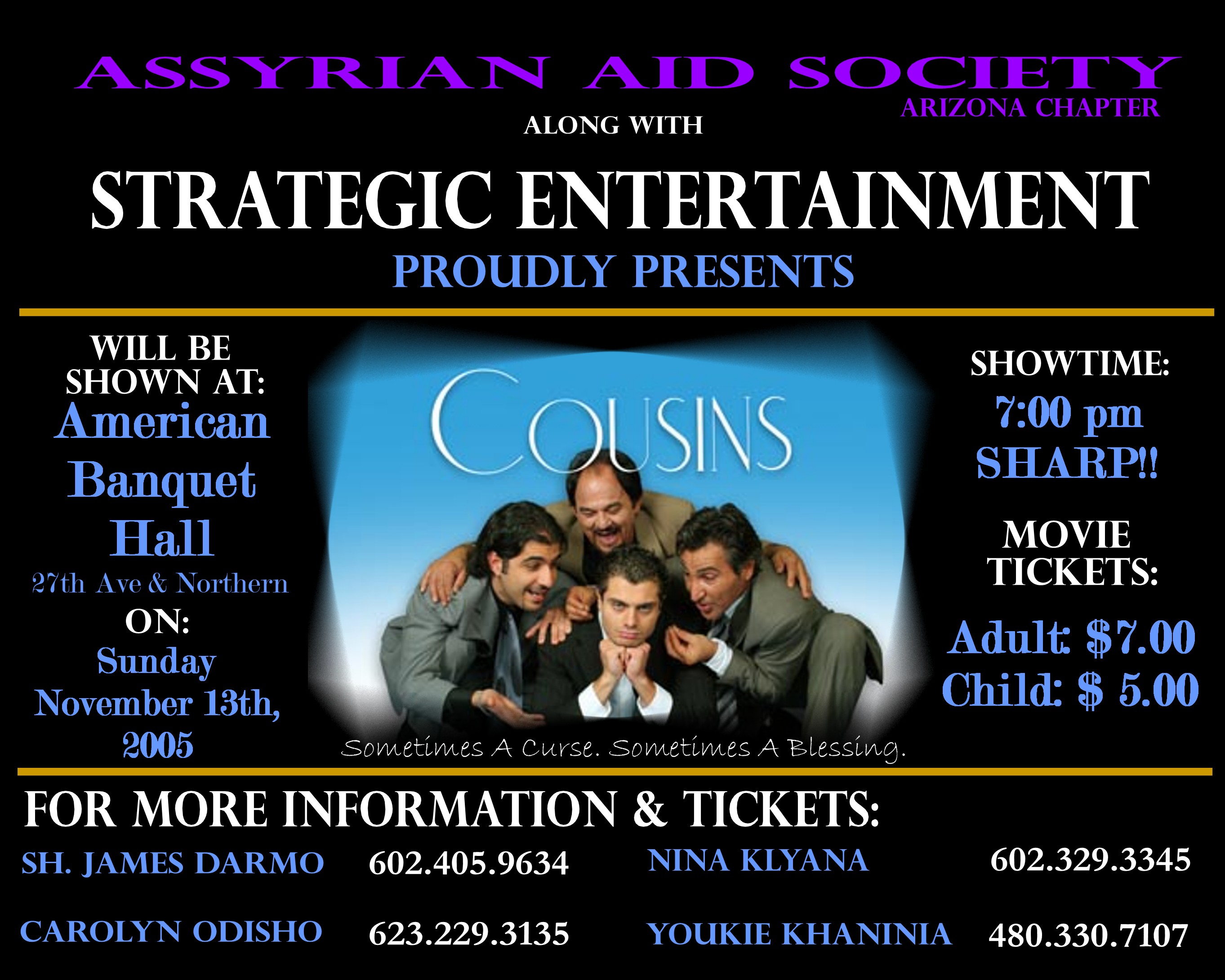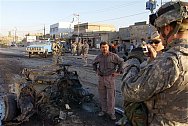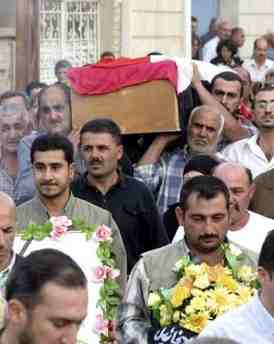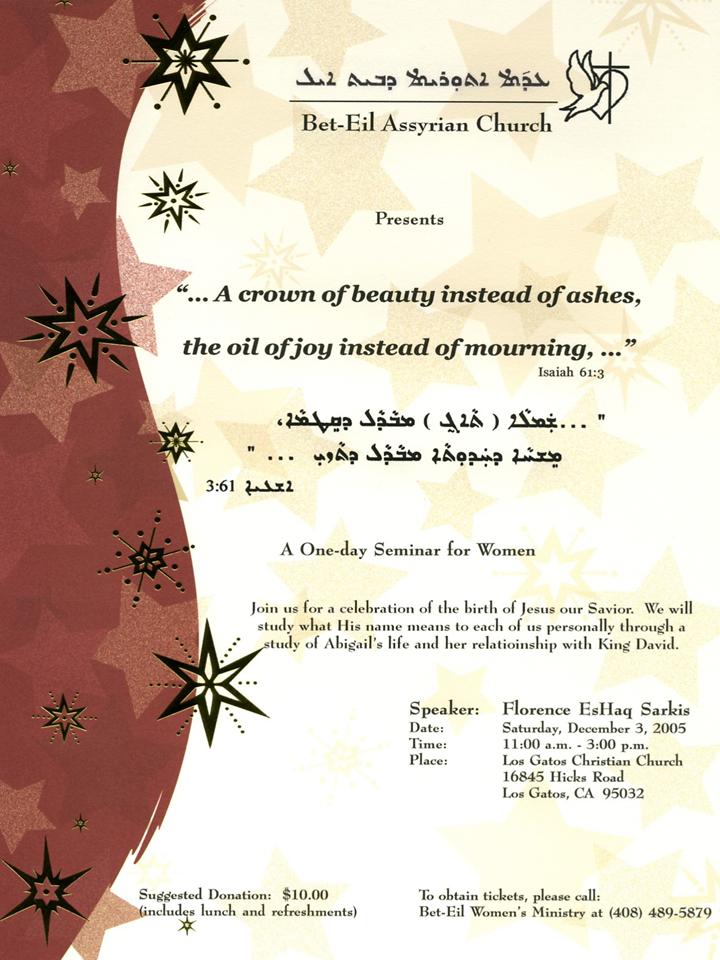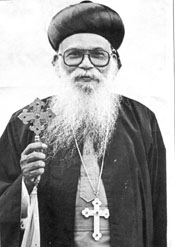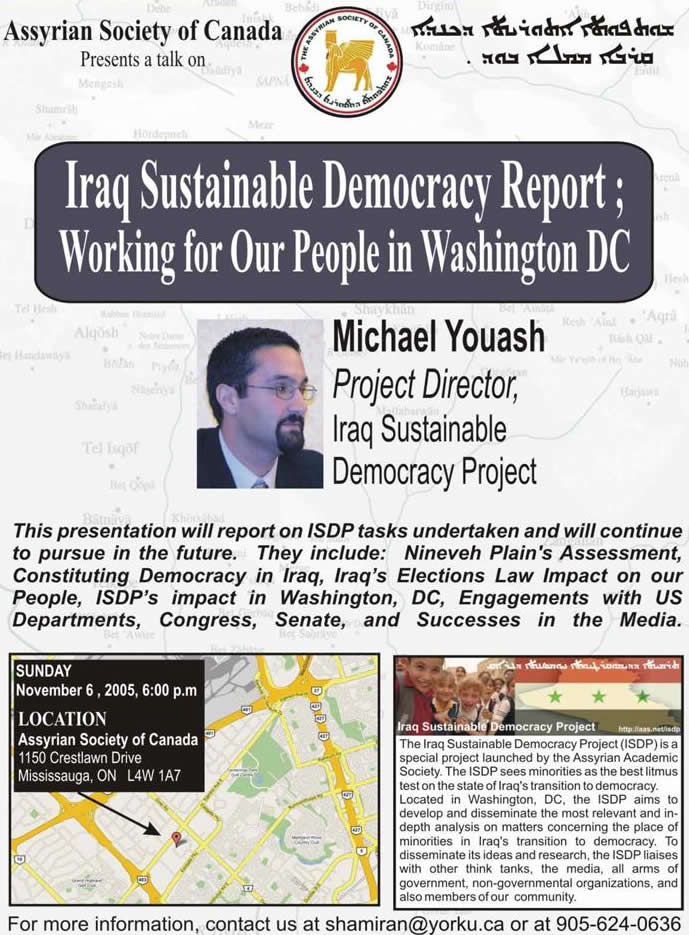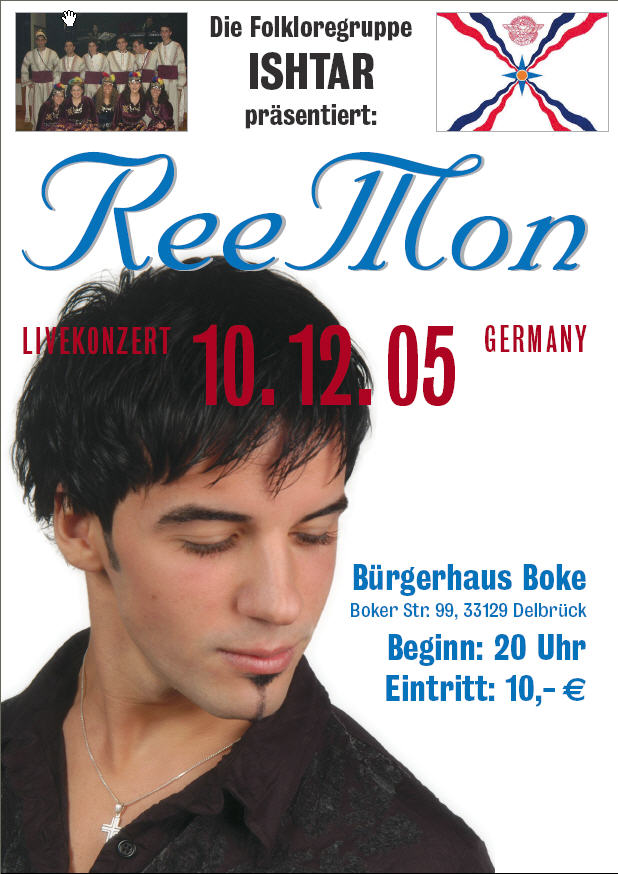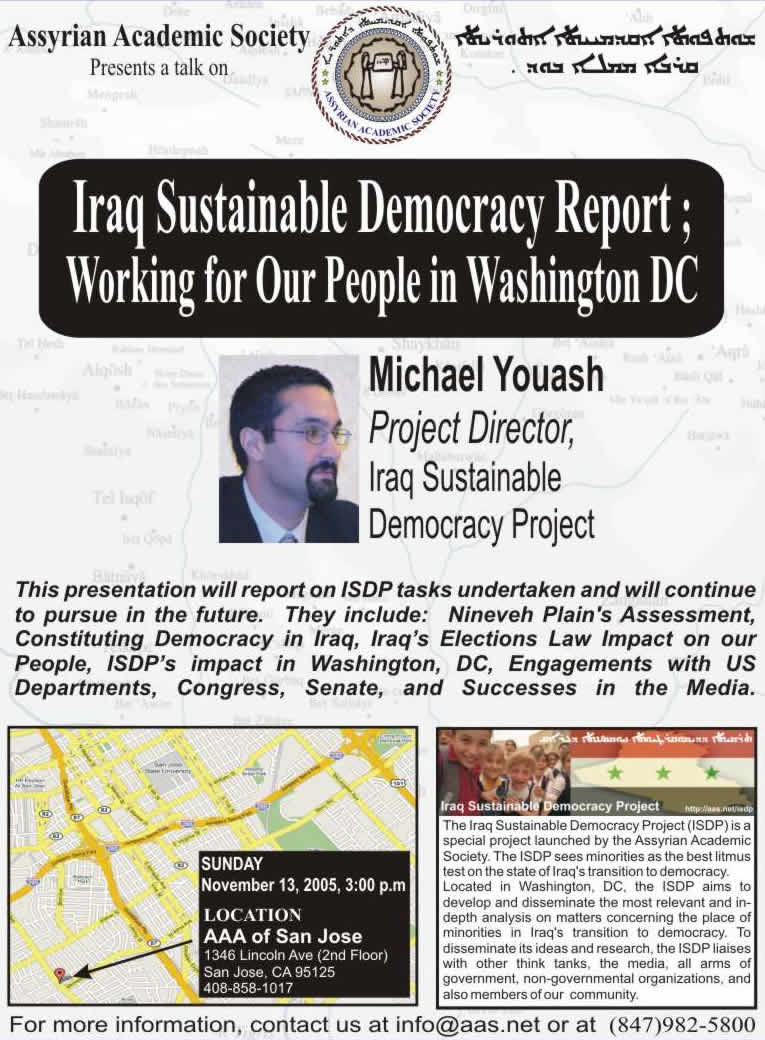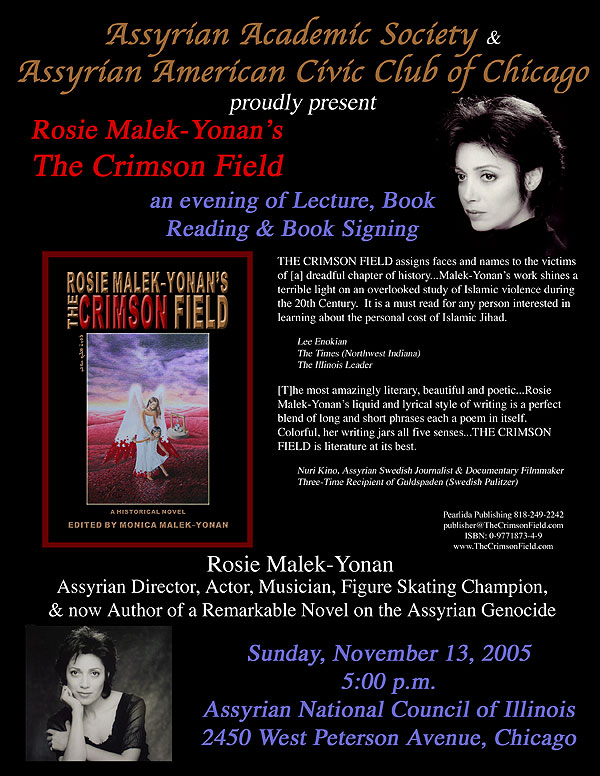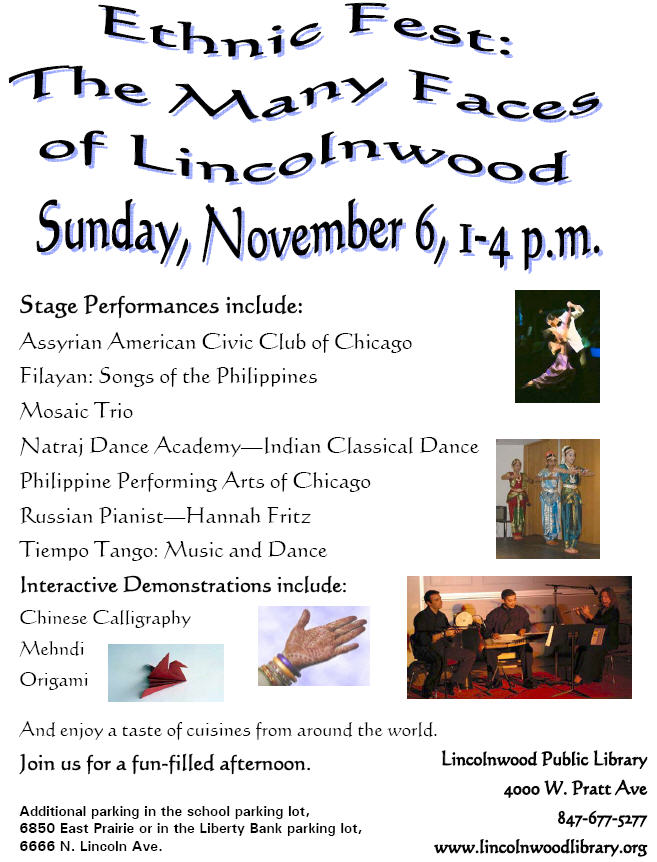H. E. Mor Julius Yeshu Çiçek Passed Away in Germany
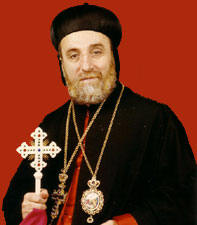 |
Mor Julius Yeshu Çiçek |
(ZNDA: Germany) His Eminence Mor Julius Yeshu Çiçek, the Metropolitan of the Central Europe and the Benelux Countries of the Syrian Orthodox Church, passed on to eternity on 29 October on his way to Switzerland from Holland in Düsseldorf, Germany. Mor Çiçek was 63. He was expected at the remembrance service for Metropolitan Mor Philoxenos Hanna Dolabani in Switzerland. His sudden death sent shockwaves through all Assyrian communities in Europe and the dioceses of the Syrian Orthodox Church around the world.
Because of his passion for expanding the realms of his Church in Europe by building many new parishes and monasteries, and the volumes of books on the Syrian Orthodox Church liturgy that H. E. Mor Çiçek had either authored or republished and distributed throughout the world, he was affectionately known as the "Mor Jacob Burd‘ono of the 20th century."
Mor Çiçek was born in 1942 in Upper Kafro in the Tur Abdin region (southeast Turkey) to Qashisho Barsawmo and Bath-Qyomo Sayde. At the age of nine H.E. went to the seminary of Deyr-ul-Za'faran, where he studied Syriac, Turkish, Arabic and Theology. He was ordained a deacon in 1958, and became a secretary to the late Metropolitan Mor Philoxenos Hanna Dolabani. Later he joined the Monastery of Mor Cyriacus in the region Bsheriye (Bitlis) to administer pastoral service and engaged in a mission to seek Syriac and Armenian Christians, who survived the genocide of 1915 in the hands of the Turks.
In 1960 he was made a novice monk in the monastery of Mor Gabriel and embraced an ascetic life. He taught in the theological seminary at Mor Gabriel and copied many books with his astonishingly beautiful handwriting.
When Fr. Shabo Guenes, the abbot of the monastery retired in 1962, Fr. Yeshue Çiçek was chosen as the abbot of the monastery. In 1969, Mor Iwannis Ephrem Bilgic, the Bishop of Tur-Abdin, ordained him a priest. Between 1973 and 1974, Yeshu Çiçek lived in Damascus, in the Seminary of Mor Ephrem at Atshane in Lebanon and in the Holy land. Then he came to Germany, where learned the German language and ministered to the fellowship in the diaspora. At the request of the Metropolitan of America, Mor Athanasius Yeshue Samuel, Dayroyo (Monk) Yeshu Çiçek was in the United States from 1975 until 1977, learning English and ministering to the Syriac Orthodox faithful here. In 1977, he returned to Europe and settled in Holland in Hengelo.
In the same year the Holy Synod selected him as the Patriarchal Vicar for the new diocese of Central Europe. He constructed a hall for a new Syriac Orthodox church of St. John the Evangelist, which was consecrated by the late Patriarch Mor Ignatius Yaqub III. In 1978, Dayroyo Yeshu began publishing Qolo Suryoyo (The Syriac Voice), the news magazine of the Syriac Orthodox diocese of Central Europe.
In 1979, the Patriarch Yaqub III consecrated Dayroyo Yeshu Çiçek in Hengelo as the Archbishop of the Syrian Orthodox Diocese of Central Europe, as Mor Yulius. In 1984, Mor Yulius acquired the Monastery or Dayro d'Mor Ephrem at Losser in Holland, which became the seat of the archbishop. Under the able guidance of His Eminence, the Central Europe diocese has been flourishing ever since.
With the assistance of Professor Sebastian Brock at Oxford University, His Eminence Mor Çiçek helped produce a three volume book and video on the history of the Aramaic liturgy and Syrian Orthodox Church history, titled "The Hidden Pearl".
The last years of His Eminence's life were overshadowed by controversial projects in which large sums of money were mishandled and lost to unknown hands. where a lot of money was involved and lost to unknown hands. The money scandal which was attributed mainly to Bishop Augin (Eugene) Kaplan of the Diocese of Eastern USA eventually dragged Mor Çiçek into near complete bankruptcy. The monastery and land properties including a graveyard in Holland are still under the threat of liquidation by the banks in Europe.
Mor Çiçek was also a controversial figure in the politics of the Assyrian nation. He began his spiritual life as a proud Assyrian monk, wrote poems on his Assyrian heritage and republished the first book written by Professor Ibrahim Gabriel Sowmy in Brazil titled "The Assyrian Culture" (Mardutho d Suryoye). He later became a strong anti-Assyrian activist, denouncing the "Assyrian" identity of the Syrian Orthodox Church. However lately, he attended the Assyrian Genocide demonstrations in Europe (click here) and invited Assyrian dignitaries to his monastery
The funeral of H.E. Mor Çiçek will take place on 5 November at 12 p.m. in the cloister of Mor Ephrem of the Syrians in Glane/Losser (Holland). The service will be conducted by His Holiness Patriarch Mor Ignatius Zakka Iwas and in the presence of many Assyrian bishops, dignitaries, and the public.
 Zinda Magazine offers its condolences to all Assyrians and in particular the members of the Syriac Orthodox Church. The biographical information noted above was provided courtesy of the Syrian Orthodox Resources, Mr. Gabriel Rabo of the Suryoyo Online & Dr. Zech C. Scheariah in Switzerland.
Zinda Magazine offers its condolences to all Assyrians and in particular the members of the Syriac Orthodox Church. The biographical information noted above was provided courtesy of the Syrian Orthodox Resources, Mr. Gabriel Rabo of the Suryoyo Online & Dr. Zech C. Scheariah in Switzerland.
New spiritual Leader Named for India’s Malankara Church
Courtesy of The New India Express, the Associated Press
31 October 2005
The Hindu
1 November 2005
|
| Baselios Mar Thoma Didimus I, the new Catholicus of the East and Malankara |
(ZNDA: Kottayam) Ending days of speculation, Catholicos Baselios Mar Thoma Mathews II, supremo of the Malankara Orthodox Syrian Church and Malankara Metropolitan, decided to step down from the top ecclesiastical post last Sunday.
The Catholicos, who is in his nineties and the world’s oldest serving bishop in any of the Christian denominations decided to relinquish the post at the end of long deliberations during the past few days.
He sent his resignation letter in the afternoon, after celebrating a Holy Mass in the Devalokam Aramana chapel here, to Rev Thomas Mar Athanasios, secretary of the Bishop’s synod.
An urgent meeting of the church synod was convened on Sunday night at Parumala, Mavelikkara.
Almost all bishops in the Church were camping there to take part in the auspicious annual feast of St Gregorios.
The meeting accepted the resignation and discussed arrangements to facilitate a smooth succession by elevating Catholiocs-designate Thomas Mar Thimotheos, 85, as the new supremo.
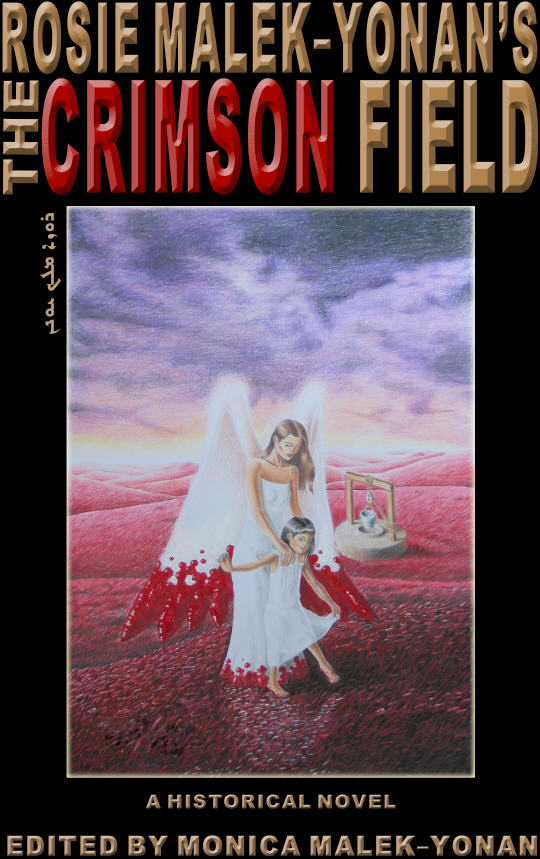
Tour Itinerary
|
Friday, November 4 - 4:00 p.m.
Televised Lecture, Book Reading, and Q&A Session
Assyrian American Civic Club of Turlock
airing on Modesto Channel 26
Saturday, November 5 - 1:00 pm & 7:00 p.m.
Televised Lecture, Book Reading, and Q&A Session
airing on Turlock/Ceres Channel 15
Monday, November 7 - 10:30-11:30 a.m. (Calif time)
"Assyrian International TV Program"
Live Satellite Television Interview by Nardine Mansour
airing on Apadana Satellite
Friday, November 11 - 7:00 p.m.
Live Radio Interview: Assyrian Night Star Radio
8:00 PM / 1590 AM
Friday, November 11 - 9:00 p.m.
Book Signing
Assyrian American Association of Chicago, Inc.
1618 West Devon Ave., Chicago, IL 60626
Saturday, November 12 - 1:00 p.m.
Book Signing
Mesopotamian Museum
6301-07 Pulski Rd. Chicago, IL 60646
Sunday, November 13 - 11:00 a.m.
Book Signing - After Holy Mass
Mar Givargis Church
7201 No. Ashland Ave., Chicago, IL 60626
Sunday, November 13 - 5:00 p.m.
Assyrian National Council of Illinois
2450 West Peterson Ave., Chicago, IL 60659
(presented by Assyrian Academic Society and
Assyrian American Civic Club of Chicago)
For More Information Click Here |
Charismatic Church Head
Catholicos Baselios Mar Thoma Mathews II, who was elected to the top post by the Malankara Association meeting held in 1991, is a charismatic personality having wide acceptance in the society.
He is also credited with steering the 20 lakh-members’
strong Orthodox church when the church feud was at its height. His nearly one-and-a-half decade tenure as Catholicos also witnessed the church gaining immense political leverage.
The Enthronement of the New Leader
On Monday a
new spiritual leader of India’s main orthodox church was named. Thomas Mar Themothios, 85, was consecrated as Catholicos of the East and Malankara Metropolitan, said the church’s spokesman Jose Parakadavil. Thomas Mar Themothios was enthroned as the seventh Catholicos of the Malankara Orthodox Church at a solemn ceremony held at the St.
Peter's and St. Paul's Church at Parumala. On taking up the position, he chose the name of Baselios Mar Thoma Didimus I.
The enthronement service was led by the Church Synod comprising all the Metropolitans amidst the holy Eucharist celebrated by Thomas Mar Makarios. Senior Metropolitan Geevarghese Mar Osthatheos was the chief celebrant of the enthronement service.
Thomas Mar Athanaseus, Geevarghese Mar Ivaneos, Kuriakose Mar Cleemis, Mathews Mar Epiphaneus, Peelipose Mar Eusebeus, Paulose Mar Pachomeos, Paulose Mar Militheos, Mathews Mar Savarios, Zacharia Mar Theophelus, Youhanon Mar Chrisostomos, Augen Mar Dioneseus, Gabriel Mar Gregorios, Gevarghese Mar Koorilos and Youhanon Mar Milithos were the co-celebrants.
Hundreds of faithful thronged Parumala on the banks of river Pampa to witness the occasion.
The holy Eucharist began at 7 a.m. and the enthronement service around 9 a.m. The new Catholicos, seated in a chair, was lifted thrice by the Metropolitans amidst loud chants of `Oxion', a Greek word that meaning `that he is worthy'. Then, the new Catholicos read out the Holy Bible.
Outgoing Catholicos Moran Mor Baselius Mar Thoma Mathews-II blessed his successor and handed over the Pastoral Staff to him, later, marking the culmination of the main part of the enthronement ceremony.
It is for the first time in the history of the Malankara Orthodox Church an outgoing Catholicos himself attending the enthronement of his successor. The newly enthroned Catholicose blessed the gathering and he was felicitated at a meeting held at the church hall later.
The new Catholicos made his reply speech on the occasion.
The Malankara Church
The Malankara community trace their origins to families evangelized by St. Thomas (Mar Thoma) nearly 2,000 years ago, “An era has ended as Father Mathews was a very popular Catholicos,” Parakadavil told The Associated Press by phone from church headquarters in the city of Kottayam, about 400 miles southwest of Bangalore.
The Malankara church has 2.5 million members, most of them in the southern state of Kerala, on whose shores St. Thomas arrived around A.D. 50, according to Christian tradition. The Malankara church is a successor of India’s oldest church, the St. Thomas Christians. While many factions broke away to embrace Catholicism or Protestantism during Portuguese and British colonial rules, Malankara remained independent. The Church also has dioceses in the United States, Canada and the United Kingdom.
 Special thanks to Mr. Thomas Paul in India for the coverage of this news for Zinda Magazine.
Special thanks to Mr. Thomas Paul in India for the coverage of this news for Zinda Magazine.
AUA Executive Board Meets in Chicago
(ZNDA: Chicago) The Executive Board of the Assyrian Universal Alliance (AUA) met in Chicago, USA on October 29-30, 2005. It discussed the recent activities of the AUA and reviewed the reports of the Americas, Asian, Australian, and European chapters.
The Board also discussed the Assyrian situation in a post-referendum Iraq and upcoming elections.
Furthermore, the AUA studied the importance of its eventual presence in Iraq and neighbouring countries to promote the Assyrian cause and heighten its relation with the governmental agencies and our political and national organisations.
 The AUA release was provided by Ms. Mary Younan, the Executive Secretary of the Assyrian Universal Alliance.
The AUA release was provided by Ms. Mary Younan, the Executive Secretary of the Assyrian Universal Alliance.
Assyrians Killed & Wounded at Fairfield's Babylon Cafe
Courtesy of the Fairfield Digital
2 November 2005
By Les Kennedy
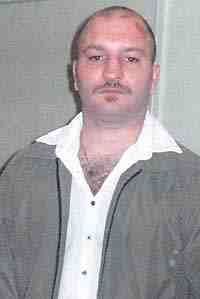 |
The victim, Raymond Khananyah |
(ZNDA: Fairfield) For more than a decade many of the men of Fairfield, Australia's Assyrian community have gathered in the Babylon Cafe to play backgammon, cards, talk business or gossip over sweet tea and coffee, a meal or smoke tobacco in hookahs.
The kabob cafe, inside the tiny Civic Arcade off busy Ware Street, had been a place to relax. But over the past year the atmosphere has been peppered by arguments and scuffles between individuals or groups of men - sometimes brandishing guns - fearful local businessmen, who asked not to be named, told the Herald yesterday.
On Monday night it culminated in the killing of Raymond Khananyah, 29, whom police believe was a bystander, and the wounding of three other men.
"We ran away from Iraq so he wouldn't get killed in the war … He didn't deserve to die that young," his sister, Lydia Boza.
Ramon's father Simon believes his only son was in the wrong place at the wrong time.
"He hadn't been to that cafe in months. He just decided to go out on Monday night and now he is dead," Mr Khananyah told The Daily Telegraph yesterday.
"We can't believe this has happened. He was a good boy. He had no enemies. I took him from Iraq so he wouldn't get hurt but he was hurt here in Australia and we have lost him."
Two of the wounded men, both 48, whose names were not made public, were in the cafe when they were critically wounded. One was the brother of the restaurant owner. A fourth man, aged 19, escaped with a bullet graze to the arm.
The cafe owner, known only as Amir, said yesterday the man who pulled a gun on Monday afternoon had threatened to return.
"He said 'I'll will see you tonight'," Amir said.
Amir said he reported the matter to police and was planning to close the shop early but was assured a police car would cruise the area that night, so he decided to stay open.
Amir said the customer who was involved in the scuffle on Monday afternoon was not present at the cafe that night.
"They just started shooting. They were shooting everywhere at all these innocent people sitting there," he said.
Police are looking into Ramon's background for clues to the murder but have yet to determine a motive for the shooting or the identity of the intended victim.
Amir's 48-year-old brother was shot in the chest as he sat playing cards inside the cafe.
His 48-year-old friend was also shot and both men remained in a critical condition in Liverpool Hospital last night.
A 19-year-old who was shot in the arm has been released from hospital and was questioned by police yesterday.
At 9.40 pm three gunmen in balaclavas and armed with semi-automatic pistols alighted from a black Honda Civic in Ware Street and fired up to 17 shots into the cafe, sending 20 men diving to the floor. Mr Khananyah, who worked at his mother's nearby tobacconist shop, was standing outside when he was fatally wounded.
The attack has exposed a string of gun-play incidents in the arcade since Saturday, some of which were not reported to police - including one, according to a businessman who did not want to be named, at 10 am last Saturday near the arcade entrance.
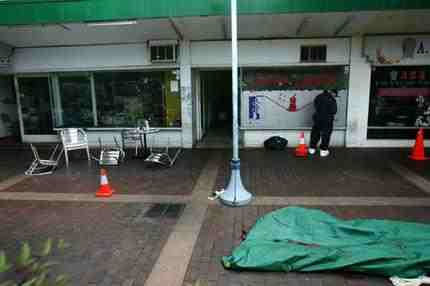 |
| A forensic officer investigates after the shooting at the Babylon Cafe in Fairfield. Photo: Nick Moir |
Superintendent Mark Henney, the head of Task Force Gain, the police Middle Eastern crime squad, said that at 2.30 pm last Saturday a man had jumped out of a white Suzuki Vitara and fired three shots from a revolver that struck the wall of the cafe. Police learnt of the incident only when called to the restaurant on Monday just after midday, when another man had entered the cafe with a pistol and confronted three seated men.
"When police arrived at the midday incident the gunman and the other men had left," said Superintendent Henney, who has formed Strike Force Mallison to investigate all the incidents leading to the fatal shooting.
"That entire area of Fairfield has a fairly large Assyrian community. They run a number of businesses and, while the Assyrian community have been living in Australia for many years and have been conducting their businesses within those areas in a peaceful manner, we have had incidents where a few within that community have turned to violence in order to underpin their criminal activities," Superintendent Henney said. "We will be, of course, looking at those angles as to whether there is some other criminal activity related to this."
A shopkeeper, who asked not to be named, said Mr. Khananyah was a friendly, peaceful man who had never hurt anyone and was simply walking past when the gunmen opened fire.
Ramsey Hanani, who runs a mobile phone store, said he knew Mr Khananyah and his parents, who arrived in Australia 15 years ago.
"It is very sad," he said. "He was a nice person."
Police are investigating the possibility the shooting is related to drug dealing.
Assyrian Coalition in Stanislaus to Request Election Polls
(ZNDA: Modesto) A "Coalition" of the Assyrian organizations and individuals has been formed in California's Central Valley that includes Modesto and Turlock "to advocate and promote unity" and will encourage participation during the December 15th Iraqi parliamentary elections under a single platform.
The body will demand from the authorities in Iraq to allow an election
(polling) center in Turlock or Modesto to facilitate and encourage all Iraqis to come and participate in the upcoming elections.
This group is organizing a rally at the Assyrian American Civic Club of Turlock on Sunday, 6 November at 6:00 P.M. The representatives of this coalition at press time include the following:
- Raymond George, PhD, Independent
- Hawel Hawel, Assyrian American Association of Modesto
- Fred Isaac, Assyrian Aid Society of America,
Central Valley Chapter
- William Julian, Assyrian American Civic Club of Turlock
- Johny Shamesaldin,
Assyrian Democratic Movement,
Central Valley Chapter
- Irene Warda, Assyrian Democratic Organization, California Chapter
- Shimshon Warda,
Bet-Nahrain National Qwest
Joseph Kassab Featured in 2005 America's Table
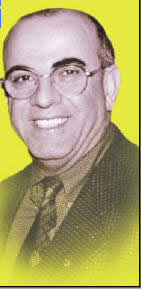 |
Joseph Kassab is profiled in this year's America's Table |
(ZNDA: Detroit) America's Table is the American Jewish Committee's "Thanksgiving Booklet" celebrates the diversity of American society. The booklet succinctly sets forth the American story and helps all, regardless of ethnicity or faith, to express gratitude for being part of the American journey. To help tell the story, it profiles nine men and women whose backgrounds, struggles and triumphs link them as Americans.
America’s Table® was created five years ago after the American Jewish Committee recognized a need for spirituality and togetherness following the terrorist attacks of September 11, 2001.
This year, Mr. Joseph Kassab, a Chaldean from Michigan and the president of the Chaldean National Congress is among the 9 individuals profiled.
Joseph Kassab fled Iraq in his early 20s. Born in the remote northern Nineveh province, where
the Chaldeans, his people, have lived since antiquity, he moved with his family to Baghdad at age 5.
They expected to find more opportunity in the city, but encountered discrimination because of their Christian minority status, refusal to join the Ba’ath Party, and awkwardness communicating in Arabic, since Aramaic was their native language.
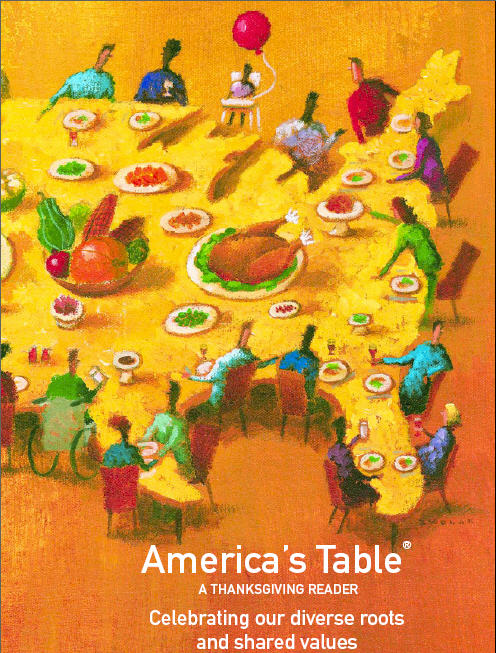 |
| To view a copy of this year's America's Table click the image above (in pdf). |
Despite these difficulties, Kassab studied to become a microbiologist. He obtained a forged passport and left for Italy, where he gained approval to enter the United States, and settled in Detroit. Kassab then embarked on dual career paths—as a research scientist and as a human rights advocate, organizing delegations to counsel Iraqi refugees waiting, often for many years, in “transit countries” for admittance to the United States, Canada, or Australia.
After Saddam Hussein’s regime fell, Kassab returned to his homeland for the first time, to present officials with a program for educating the Iraqi people about democracy. Today, he is president of the Chaldean National Congress in Michigan, advocating for Iraq’s indigenous Christians.
The New York Times Knowledge Network Program will distribute 50,000 copies of America’s Table® to schoolchildren in New York City, Long Island and Westchester. Teachers participating in the program are receiving lesson plans designed by the Knowledge Network Program in consultation with the AJC that will deepen appreciation for diversity.
America’s Table® is published by the American Jewish Committee in cooperation with the National Association for the Advancement of Colored People, the National Council of La Raza, the National Urban League, the National Conference for Community and Justice, the Cuban American National Council, the Islamic Supreme Council of America, the Japanese American Citizens League, the New America Alliance, the Organization of Chinese Americans and the Korean-American Jewish-American Council.
